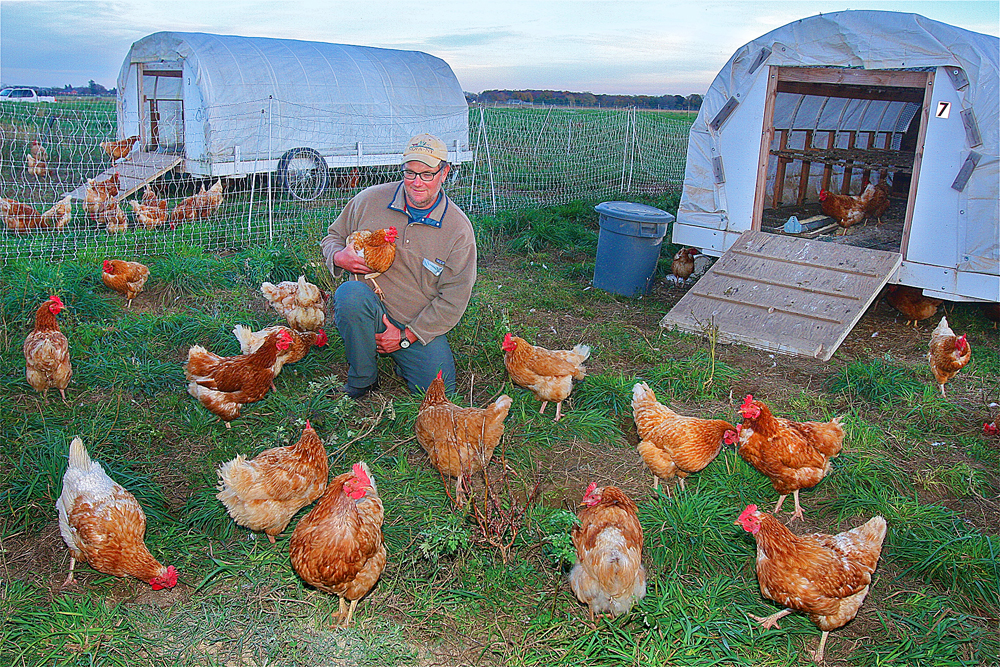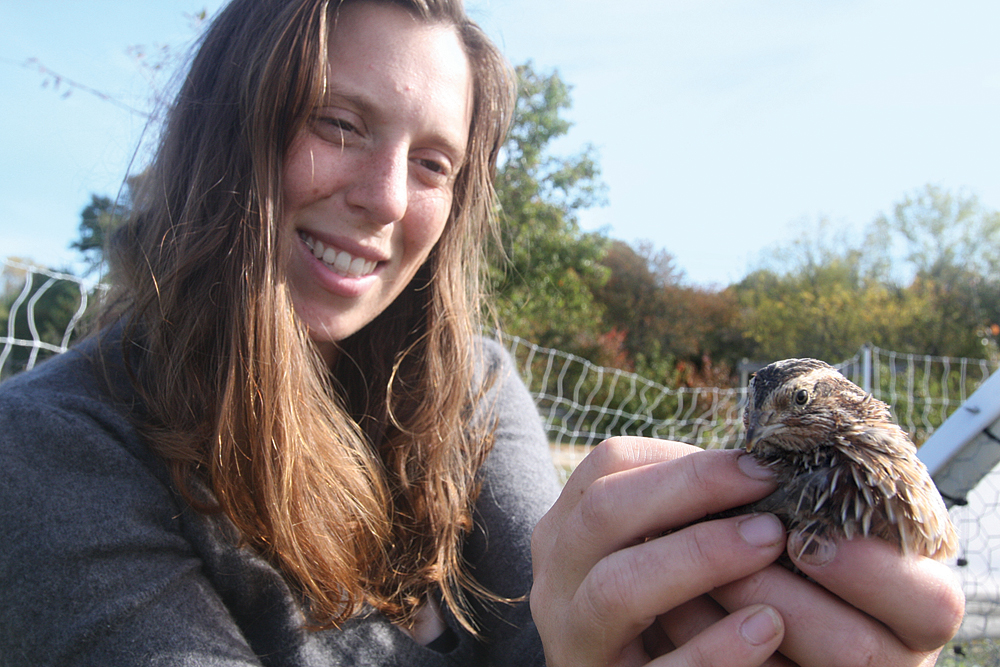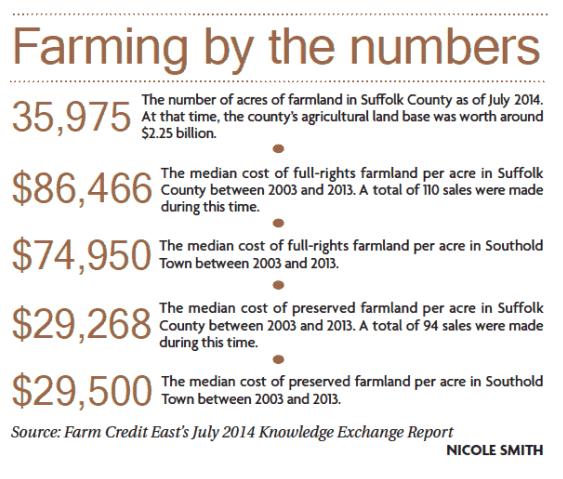Here’s what it’s like to be a new farmer on the North Fork

In 2004, after 20 years as a banker in Manhattan, Chris Browder was ready for a change.
So he packed up his desk, grabbed a copy of “The Omnivore’s Dilemma” and made the move to the North Fork, where he and his wife, Holly, own Browder’s Birds in Mattituck.
For a couple with no farming experience, the next several years were a winding journey into a business filled with unforeseen roadblocks. To become a successful farmer without having grown up in a farming family presents a unique set of challenges, they found.
The Browders are one example of a new era of beginning farmers who must learn as they go along.
It took them six years to establish their business. To get started, Mr. Browder applied for an apprenticeship with Garden of Eve organic farm and market in Riverhead, where he spent a season. He raised a flock of meat birds, which he later slaughtered and sold.
Browder’s Birds was finally born in 2010. But getting it off the ground was far from simple.
“First of all, the capital required to simply start a farm is enormous,” Mr. Browder said. “A lot more than I was expecting it to be.”
After acquiring the land, he said, he needed to get the basics — tractor, tiller, animals and more — which was a “daunting” task when it came to cost.
“It’s not like I’m sitting over here made of money,” he said. “That’s been probably the biggest challenge, just how much money it actually costs … It’s not like we’re sitting here with mountains of equipment and lots of structures and so forth. Pretty much everything we have is kind of made homemade. Even with that, it’s still very expensive.”
Dan Heston, senior manager of agricultural programs at Peconic Land Trust, said that many people entering the industry today are what he calls “second-career farmers,” like Mr. Browder. Since 2010, according to the U.S. Department of Agriculture, that trend has pushed the national average age of a farmer from 55 to 57. In the last five years, the number of farmers in the U.S. over age 75 has risen by 30 percent and the number under age 25 has dropped by 20 percent.
In Suffolk County, the cost of one acre of farmland starts at around $12,000 and can go as high as $2 million, according to a study done by Farm Credit East, a borrower-owned lending cooperative specifically serving the agricultural industry. And that’s just for land.
To help ease the financial strain of getting into agriculture, numerous organizations, including Farm Credit East and Peconic Land Trust, have created scholarships and grants specifically meant to assist beginning farmers.
One related program is FarmStart, established by Farm Credit East in 2005, which will invest up to $50,000 of working capital in the operations of new farmers and cooperatives. Each beneficiary works with a FarmStart adviser who provides financial and management training throughout the term of the investment, said Bob Smith of Farm Credit East. The objective is not only to provide start-up funding, but to help new farmers establish strong business plans and solid credit records.
Farm Credit East also offers scholarships to college students interested in agriculture, pays fees associated with USDA-FSA loan guarantees, reduces interest rates for young farmers through loan guarantees and offers discounts on financial services.

Abra Morawiec, owner of Feisty Acres Farm in Jamesport, New York’s first organic quail farm, agreed that capital is one of the largest hurdles in starting a farming enterprise. The costs of owning farming materials are high and farming isn’t an immediately lucrative venture.
“The biggest challenge for me was starting from the bottom, as an apprentice, and trying to figure out how can I save my money up to actually start my own enterprise,” the 29-year-old said. “The only way that I could possibly make that happen is by forming relationships.”
Ms. Morawiec did just that with numerous farmers on the East End, she said. But most notable were her friendships with Chris and Holly Browder and Phil Barbato, owner of Biophilia Farm in Jamesport.
Ms. Morawiec rents land and barn space from Mr. Barbato and uses the Browders’ mobile processing unit to slaughter her birds.
“Especially in this part of the state, it’s tough to get a start because the land prices are so high. But on the flip side, the market is right here,” Mr. Barbato said. “So, I think it’s important that we give young and/or beginning farmers help … We want to be able to pass things on and we want things to stay healthy and wholesome like they are now.”
Another problem beginning farmers face involves the availability of farmland, a particularly pertinent issue on the North Fork. The Peconic Land Trust has worked to fix this, Mr. Heston said, through its Farms for the Future program.
“What we do is basically provide someplace for them to be,” he said. “We have the land and some infrastructure, such as wells and fencing,” he said. “And then we also, if they want, we provide some mentoring.”
The land offered is through a preservation program established in the 1970s that sets land aside to be used strictly for agriculture, allowing it to be leased, rather than purchased, at a relatively affordable cost.

Yet another potential stumbling block can come with the business side of agriculture, which Mr. Smith said novice farmers don’t always realize plays such a big role. To help educate farmers, Farm Credit East offers classes and webinars focused on the business aspects of farming.
“It’s the combination of really being a top-notch producer, understanding your market and market challenges with competitors and being a good financial manager,” Mr. Smith said of the profession.
Understanding the market is especially important on the North Fork, where the saturation of agricultural operations can make success elusive. Mr. Smith and others agreed that one effective strategy for new farmers is to offer a niche product that people can’t find elsewhere.
The final challenge — a lack of fundamental knowledge — comes with no immediate or clear-cut solution. Mr. Heston said some people “don’t have the skills to farm, but they think they do.” There is a lot more to farming than meets the eye, he said, which people who didn’t grow up in the industry fail to realize. This includes how to work all the equipment, how to set up an irrigation system, what equipment is necessary and more.
It can take time to acquire all that vital knowledge, but Mr. Heston said that pursuing apprenticeships and making connections within the agricultural community can help speed the process. Ms. Morawiec, who found her success through mentorship, said more programs are needed to pair new farmers with more established ones who can offer experience and guidance.
Despite all the hurdles a new farmer faces, interest in joining the agricultural industry remains high.
“There’s more interest now than there’s been in the last 15 years, I know that,” Mr. Heston said. “People really want to get back to their roots and grow something and do something.”
Photo caption: Mattituck farmer Chris Browder with some of his chickens, a cross of Rhode Island Reds and White Rock. (Credit: Barbaraellen Koch)








